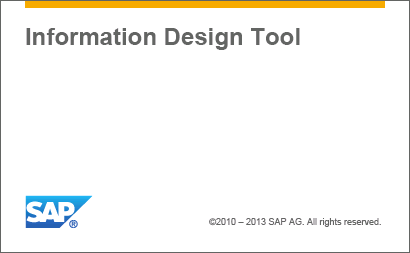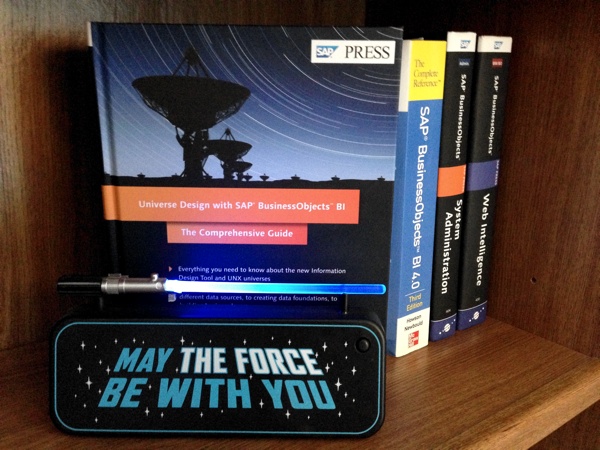Today is the first day of the 2009 SAP BusinessObjects User Conference in Dallas, Texas. This year, universe design and Web Intelligence, and Xcelsius are “Spotlight Topics”, meaning that they’ll each be given significant coverage at the conference. The breakout that I’m giving today is entitled “Universe Design: Evolution, Intelligent Design, or Just a Big Mess”. I’ll be describing the key tasks, common pitfalls, and best practices at each stage of the universe life cycle.
Universe construction with the Universe Design Tool (Designer) application is an important task, yet it is only a portion of the overall life cycle of a business intelligence project. I certainly do not want to minimize its importance. However, it is my experience that many business intelligence projects are doomed to fail before the Universe Design Tool application is ever launched.
One of the best practices I will describe today is getting formal training for the people in your organization who use the Universe Design Tool. Disclaimer: I am a trainer for an SAP Authorized Education Partner; however, allow me to back up what I am saying from personal experience.
My experience is more common that I would prefer. My career with BusinessObjects began in early 2003. I was an IT consultant with many years of Oracle experience but found myself on the bench at an inopportune time. The industry as a whole was struggling from the September 11, 2001 terrorist attacks, a desire for organizations to drastically curtail IT spending after large outlays on Y2K initiatives, and an overall slowdown in the U.S. economy. But as has been true at many different points in my career, somebody in the organization turned in their resignation. And that opened a door for me that was previously unopened.
I had no experience with BusinessObjects, but with my Oracle skills and a one-day tutorial, I shadowed my departing co-worker during his remaining two weeks, then took the reins of the project. Although he was located in another city, I was grateful for a mentor who tutored me over the phone and e-mail. He also made monthly visits to work through issues together. The ironic thing about my experience is that I worked for a BusinessObjects Authorized Education Partner. Sadly, just because an organization offers training to its clients is no guarantee that they prepare their own consultants the same way.
I finally took my organization’s 3-day universe design class after nine months of designing universes for multiple customers. I had already learned many lessons “the hard way”, but also learned several new tricks that were immediately useful. About a year later, I became a universe design instructor. It’s a demanding class, both for students and the instructor. But I can honestly say that students leave the classroom very well prepared. I’ve seen a lot of customer universes in nearly seven years of Business Objects consulting. Most of the issues that I’m called in to resolve are issues that the class tackles head-on. Recently, SAP BusinessObjects has added an additional 2-day course covering advanced topics. So even designers who have been through the first class can now take their skills to the next level.
And the classroom material is just one part of the experience. Don’t underestimate the value of the instructor’s project experience, or the benefits your team members will gain by networking with universe designers in other organizations.
So what’s the universe design IQ in your organization? Many business intelligence teams support universes created by staff members long gone, using new staff members that have never been formally trained. Although training budgets are frequently the first ones slashed in an economic downturn, don’t miss an important opportunity to put the “competence” in “Business Intelligence Competency Center”. Keep in mind that it might be more cost-effective to bring a universe design instructor on-site rather than sending one or two folks away to a class.



Great post Dallas. Having come from a reporting background using Crystal Reports, then being exposed to Universes after that, I loved the power and flexibility of the semantic layer.
Having now taught the Universe Design course many times over the last three years, I can safely say:
a) It’s a very comprehensive course and *if* students pay attention and take in what is being taught, they leave very well prepared and
b) Most of the poorly-designed universes I’ve seen over the years are because of designers who haven’t been formally trained and hence pick out the different methods they prefer to use without understanding why you use certain methods in certain situations (can someone ask ‘should I use aliases or contexts?’).
I love what universes are capable of. I think SAP BusinessObjects could do a better job of communicating the importance of a well-trained Universe Designer and hence well-designed universe.
– Josh